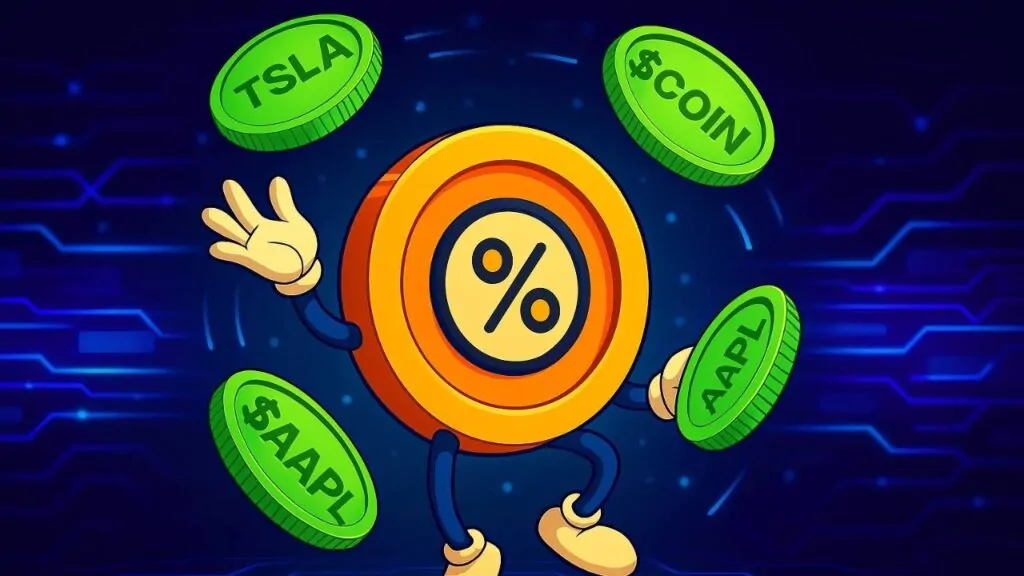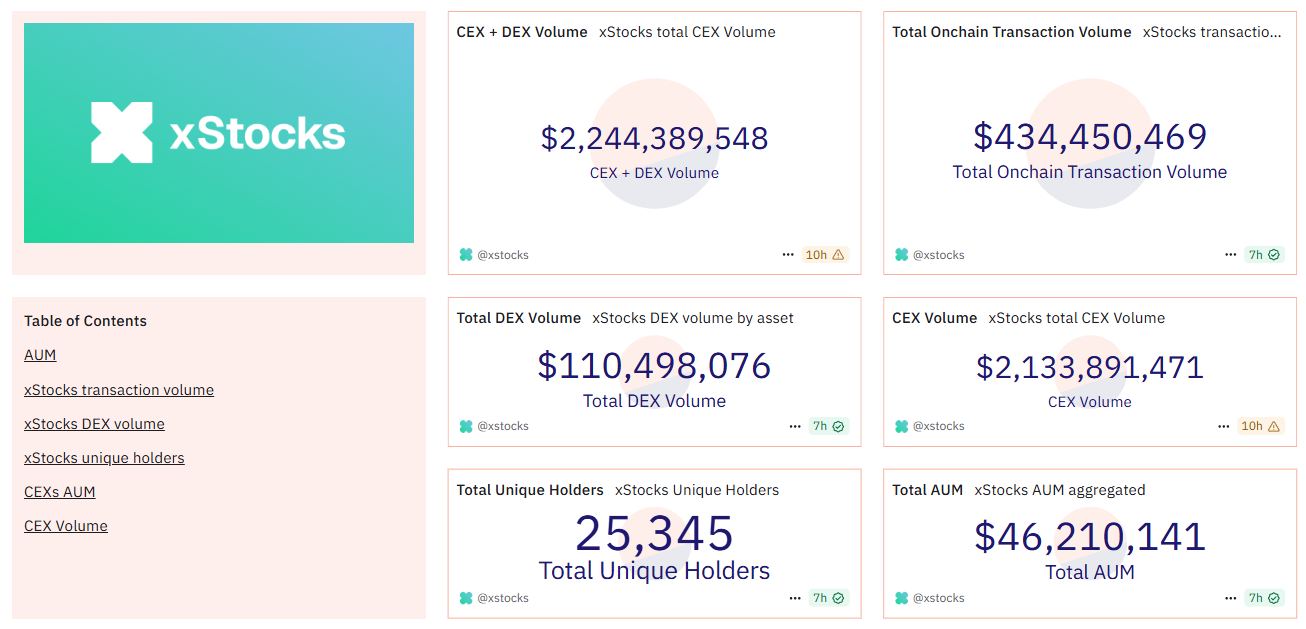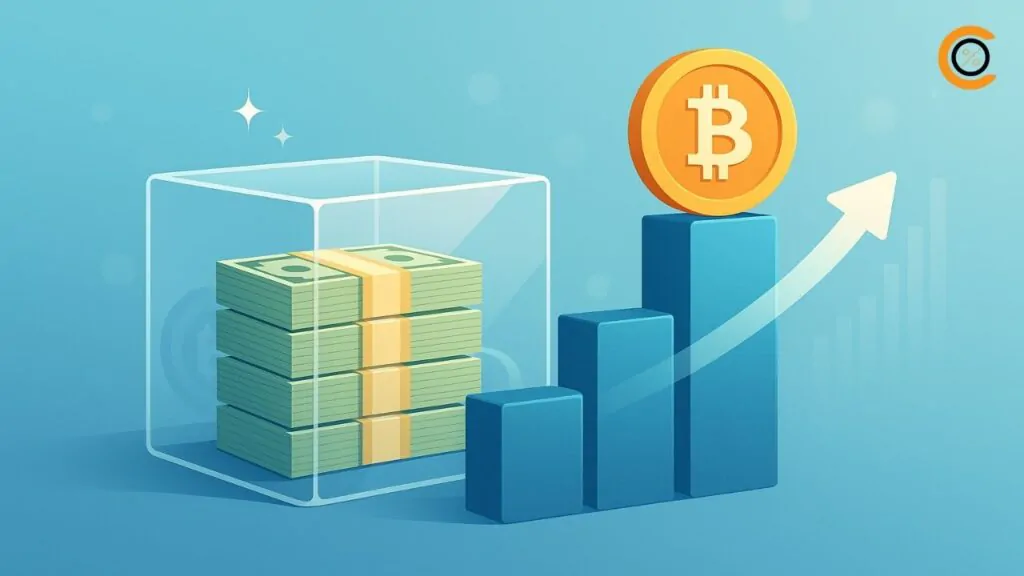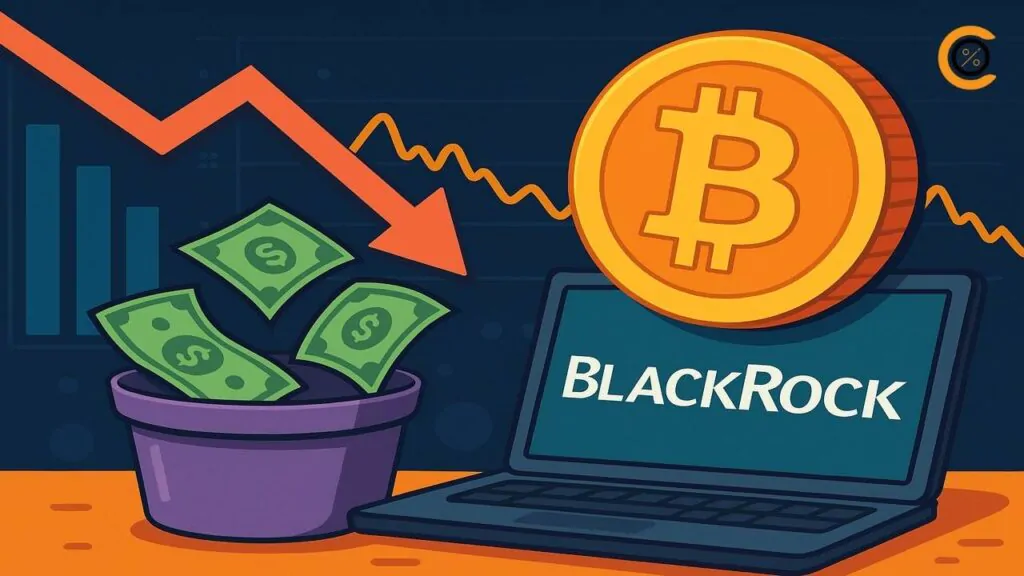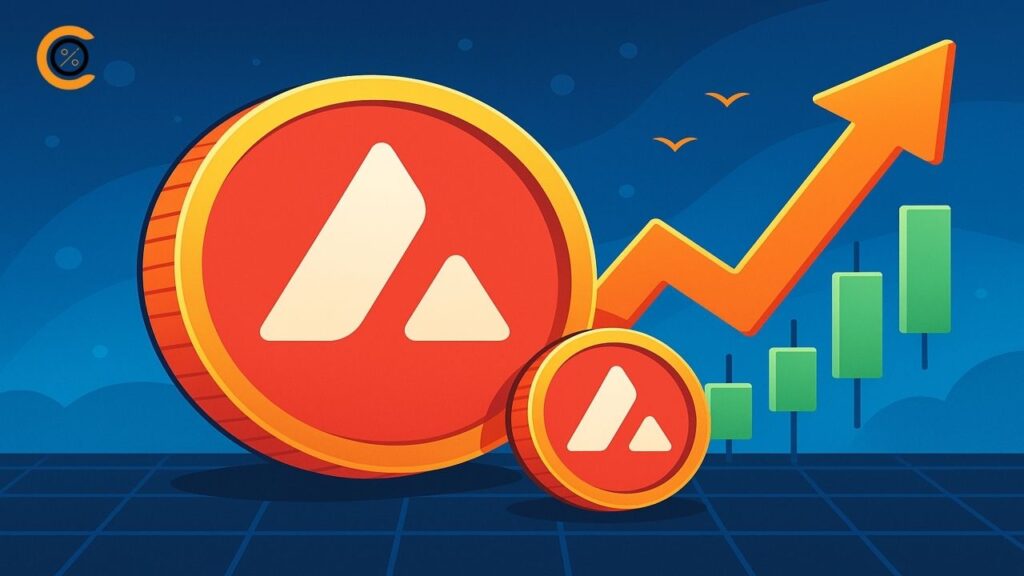- •Solana’s xStocks platform has surpassed $2.24 billion in trading volume, offering 24/7 fractional trading of tokenized stocks backed by real shares.
- •Regulatory restrictions keep the platform out of major markets like the U.S., EU, and UK, concentrating activity in more permissive regions.
- •Solana leads tokenized stock trading with around 95% market share, while Ethereum maintains an edge in compliance-focused offerings.
Despite strict access limits in major financial markets, Solana’s xStocks platform has logged more than US$2.24 billion in trading volume (combined CEX + DEX), roughly US$2.14 billion of which came from centralized exchanges.
Rapid Growth Through xStocks
Known for its speed and low transaction costs, Solana

According to Dune Analytics, xStocks has seen about $2,244,389,548 in combined trading volume across centralized and decentralized exchanges in just a few months. Centralized exchanges account for roughly $2,133,891,471, while decentralized exchanges handle about $110,498,076. Total on-chain transaction volume stands at $434,450,469, supported by $46,210,141 in assets under management and held across 25,345 unique wallets.
Related: Best Crypto Exchanges for Stock Trading
Regulatory Barriers
Despite the strong start, xStocks is not accessible in several key markets, including the U.S., EU, Canada, the UK, and Australia. These restrictions stem from securities regulations that treat tokenized equities in the same way as traditional shares, requiring full compliance with disclosure and prospectus rules.
This approach reflects lessons from earlier efforts. In 2021, Binance was forced to close its stock token program after warnings from regulators, including Germany’s BaFin, over the absence of proper documentation. By contrast, Backed Finance operates under a license from Liechtenstein’s financial authority, allowing limited access within certain European jurisdictions. Still, the majority of xStocks trading takes place in regions with more permissive or less clearly defined rules, such as parts of Asia and Latin America.
American companies that have explored tokenized equities, including Coinbase and Robinhood, have also kept these products outside the U.S. Robinhood recently announced plans to offer over 200 tokenized U.S. stocks to customers in Europe, highlighting how the sector remains focused on overseas markets.
Solana vs. Ethereum in Tokenized Stocks
Solana currently commands about 95% of all tokenized stock activity across blockchains, with tickers like TSLAx, SPYx, AAPLx, and NVDAx leading trading volumes. Its blockchain’s high throughput and low fees make it well suited for high-frequency equity token trading.
Ethereum also supports tokenized equities, with Swarm Markets offering Apple and Tesla shares under a BaFin-supervised model. However, its volumes are lower due to a stronger emphasis on regulatory compliance and institutional infrastructure. Standards like ERC-3643 and projects such as BUIDL and BENJI position Ethereum for larger-scale regulated equity issuance if more markets open up.
The near-term dynamic shows Solana as the leader in trading activity, while Ethereum retains an edge in compliance-focused offerings. Industry observers suggest a dual-track future, with Solana catering to high-volume, cost-sensitive traders and Ethereum serving issuers needing strict regulatory adherence.
Future Outlook
The next phase for tokenized stocks will largely depend on regulatory clarity in major financial centers. If the U.S. or EU allows regulated retail access, Ethereum’s compliance-ready infrastructure could attract significant institutional liquidity. Solana’s continued growth would then rely on deeper exchange integrations and the development of compliance-aware tools to match evolving standards.
In the meantime, Solana’s tokenized stocks push is demonstrating that blockchain can bridge traditional equities and decentralized markets. While it remains unclear whether this is a lasting shift or a temporary trend, early adoption shows that the appeal of round-the-clock, fractionalized equity trading extends beyond the speculative trading culture the network was once known for.


